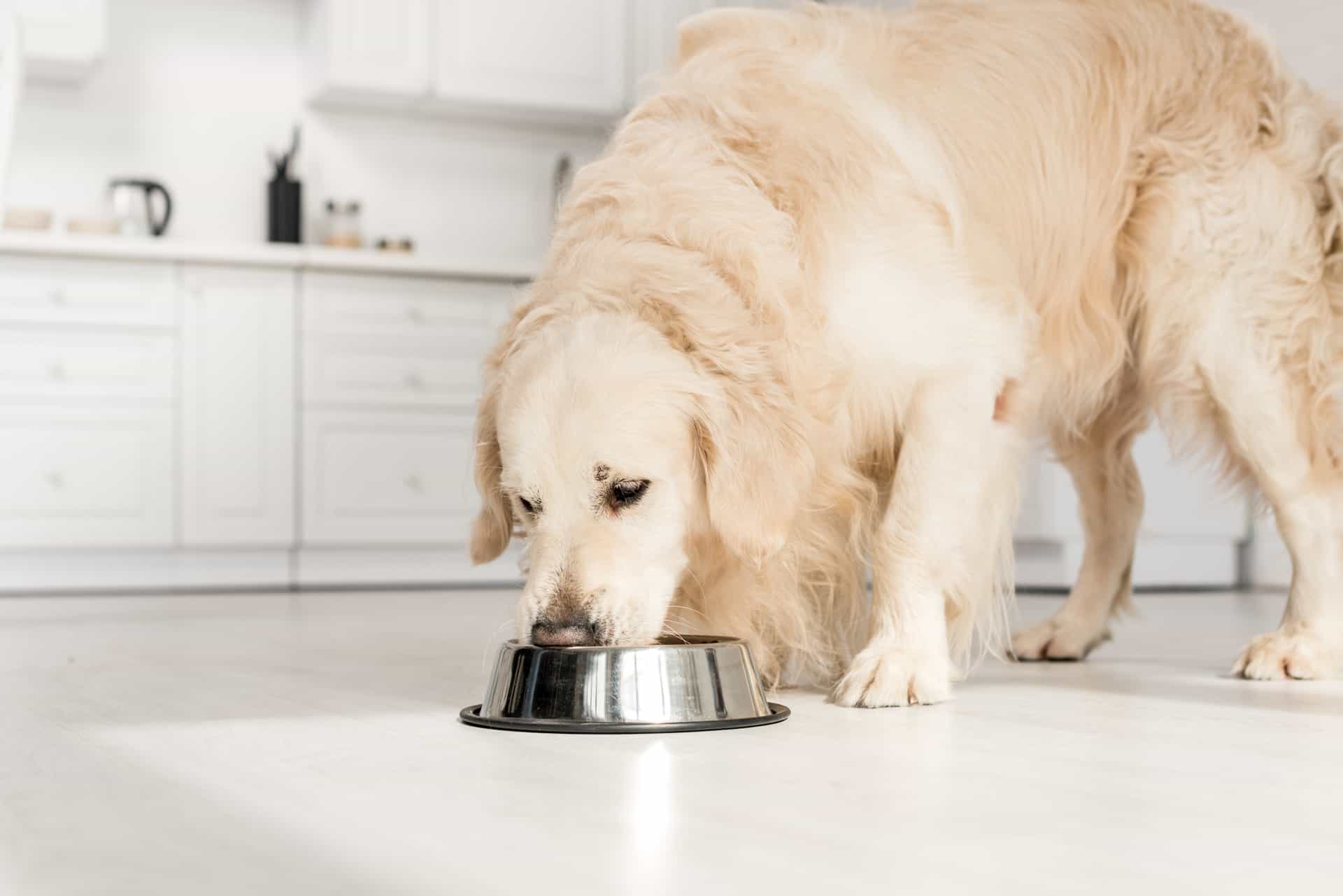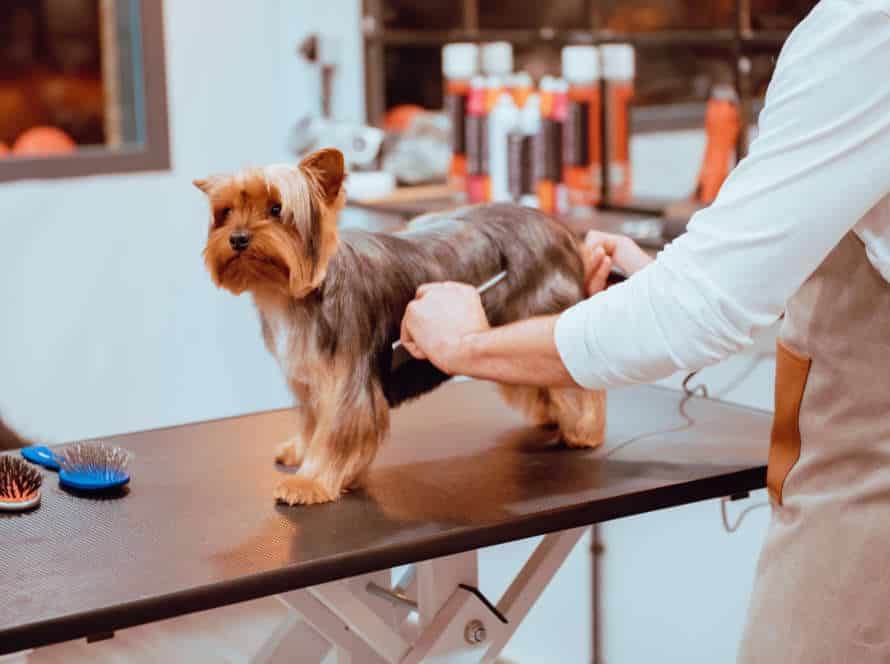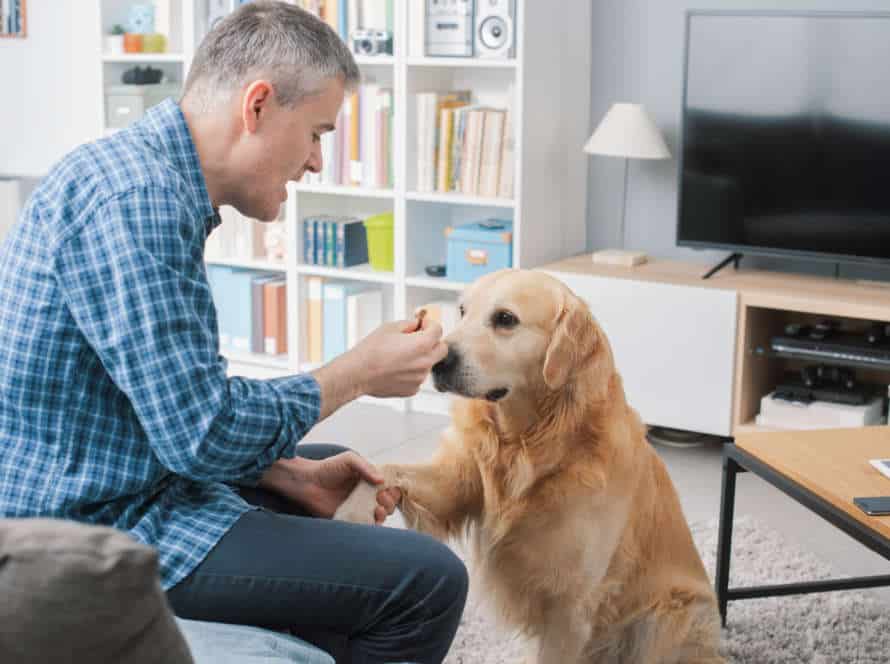A Comprehensive Guide to Feeding Adult Dogs
Feeding adult dogs is key for owners. It’s important to give your pooch a healthy and balanced diet to stay fit and lively. Here are some tips to keep in mind when feeding your adult dog:
- Pick a diet with all the essential nutrients – protein, fiber, vitamins and minerals.
- Don’t overfeed and stick to the feeding guidance from the brand of your dog’s food.
- Divide their daily food intake into two or three small meals.
- Always give them plenty of fresh water.
- Avoid human foods that are bad for dogs like chocolate, grapes, raisins, onions, garlic and avocado.
- Keep an eye on their weight and adjust their diet and exercise plan.
By following these tips, your adult dog can be content, healthy and nourished.
Understanding Your Adult Dog’s Nutritional Needs
Knowing your grown-up pooch’s dietary needs is essential for giving them a nutritious and balanced diet. It can be tricky to figure out what to feed an adult dog, as their nutritional requirements are dissimilar to that of humans. This guide will focus on the fundamentals of feeding an adult dog, including the crucial nutrients they require and how much of each should be consumed.
Knowing their Energy Requirements
Understanding your adult dog’s energy needs is key to their nutrition and health. Here’s what to think about:
- Age: Senior dogs need fewer calories than young adults.
- Size: Big breeds have different energy needs than small or medium breeds.
- Activity level: Active dogs need more calories than inactive dogs.
- Health: Dogs ill or with a medical condition may need different nutrition.
Understanding your adult dog’s energy needs helps you make informed decisions about their diet and nutrition, for their health and wellbeing. Tip: Talk to a vet for a tailored feeding plan for your dog that reflects their individual needs.
Evaluating their Body Condition
Assessing the body condition of your adult dog is a great way to understand their nutritional needs more accurately. Here’s how to do it:
- Go behind your pup and run your hands over their ribs.
- If you can’t feel them, or you have to press hard, they could be overweight.
- If you can see their ribs without any pressure, they may be underweight.
- The best body condition for dogs is when their ribs can be felt easily.
- Also, look for excess fat around their belly or hips. That could be a sign of obesity, which can cause health issues like diabetes and joint problems.
- By adjusting their diet and exercise, you can help them maintain a healthy weight and live longer.
Identifying Your Dog’s Lifestyle and Activity Levels
It’s important to recognize your pup’s lifestyle and activity levels to choose the right nutrition for them. A good diet is essential for a long and healthy life, plus disease prevention. When deciding on diet, consider these factors:
- Age – younger dogs need more calories and nutrients.
- Activity – high-energy pups need more calories. Lower-energy dogs need less.
- Lifestyle – indoor dogs may not need as many calories as outdoor ones.
- Breed – large breeds have different needs compared to small breeds.
By taking into account these factors, you can pick a diet perfect for your pup’s nutritional needs.
Choosing the Right Dog Food for Your Adult Dog
As a pet owner, it’s your responsibility to make sure your adult dog has a healthy diet. The right dog food can give your pup the boost they need for good health and a healthy weight. So, how do you decide what food is best? Let’s find out!
Understanding Dog Food Labels
It’s necessary to read dog food labels when picking the right food for your adult pup. Not all food is equal, and labels can be deceiving. Here are some terms to look out for:
- “Complete and balanced” – This means the food has all the essential nutrients for your pup’s health, according to the AAFCO.
- “Grain-free” – This means no grains like wheat or corn. These diets are often made with alternative carbs such as potatoes, peas and lentils.
- “Organic” – This means the food meets the USDA’s organic production standards. This includes no synthetic pesticides, fertilizers or genetic engineering.
Other terms to look for are “natural,” “holistic” and “human-grade,” but keep in mind these are not regulated and can be used loosely. Always check the ingredient list to see what’s in your pup’s food.
Different Types of Dog Food and Which One is Right for Your Adult Dog
Choosing the right type of food for your adult dog can be tough. There are four options: dry, wet, semi-moist and homemade.
- Dry is the most popular and cost-effective. It has a long shelf life.
- Wet food is great for dogs that need extra hydration or have dental problems.
- Semi-moist is less common but tasty for picky eaters.
- Homemade food is the most customisable. You can tailor the nutrition to your dog’s needs.
To ensure your dog’s needs are met, it’s best to talk to a vet.
Pros and Cons of Dry, Wet, Canned and Home-Cooked Dog Food
Choosing the right dog food for your adult pooch can be tricky. There are four main types: dry, wet, canned and home-cooked. Each has its pros and cons.
Dry Dog Food
Pros: Convenient, good for teeth and cost-effective. Cons: May contain fillers and preservatives, not as palatable.
Wet Dog Food
Pros: High moisture content, more meat and yummy. Cons: Expensive, not convenient and can cause dental issues.
Canned Dog Food
Pros: Long shelf life, high moisture content and tasty. Cons: Expensive, lots of preservatives and fillers, not convenient.
Home-Cooked Dog Food
Pros: Complete control of ingredients, nutritious, can help with dietary requirements. Cons: Time consuming, not all nutrients and requires meal planning.
When selecting the right food for your pooch, consider their age, size, health and nutritional needs. Speak to a vet for guidance.
Pro Tip: Always read labels carefully, avoid low-quality ingredients and rotate between different foods for a balanced diet.
How Much and How Often Should You Feed Your Adult Dog
Feeding your adult dog? It’s tricky. You don’t want to overfeed, but underfeeding isn’t good either. Here’s what you should think about: How much? How often? This article will discuss those key factors.
Understanding the Feeding Guidelines on Dog Food Packages
Figuring out feeding guidelines on dog food packages can be tricky. But, these guidelines provide important details on how much and how often you should feed your adult pup. Keep these points in mind when trying to understand the guidelines:
- Daily caloric intake: The guidelines are based on how many calories your dog needs each day.
- Activity level: The guidelines may change depending on your dog’s age, breed, and activity level.
- Dog’s weight: Your pup’s weight is the most important factor to consider when looking at the guidelines.
Follow the instructions on the package, but make small changes based on your dog’s individual needs. Monitor your pooch’s weight, body condition, and overall health to make sure you’re giving your furry friend the right amount of food. Pro Tip: Talk to a vet to better understand your pup’s needs and come up with an appropriate meal plan.
Knowing the Healthy Portion Sizes for Adult Dogs
It’s essential to know the right portions to feed your adult dog for their health and wellbeing. Here’s a guide to portion control.
The portion size for an adult dog depends on their age, weight, activity level, and breed. Generally, one meal a day or two smaller meals are best. You can work out the portion size from the guidelines on the dog food packaging or ask a vet. As a rule, adult dogs need 1-2 cups per day. Smaller breeds may need less than a cup, and larger breeds can need 2-3 cups. Monitor your dog’s weight and adjust their portions to keep them healthy. Also, don’t overfeed with table scraps or high-calorie treats.
Getting the portion size right for your adult dog will help to stop obesity and other heath issues in the future.
Deciding the Right Feeding Schedule for Your Adult Dog
Figuring out the right food schedule for your adult pup depends on a few factors. Age, weight, activity level and health all come into play. This guide will help you decide how much and when to feed your adult dog.
- Choose a high-quality dog food and read the label. Follow the recommended serving size guidelines based on your pup’s weight.
- Find out your pup’s daily caloric needs based on their weight and activity. Then, split those calories into two or three meals.
- Monitor your pup’s weight. If they’re gaining weight, reduce portion size. If they’re losing weight or seem hungry, increase portions slightly.
- Treats should be given in moderation. Don’t forget to factor them into your pup’s daily caloric intake.
- If you have any concerns about your pup’s weight or health, talk to your veterinarian.
Pro Tip: Give them fresh water and avoid table scraps to keep your adult pup happy and healthy.
Feeding Your Adult Dog a Balanced Diet
It is essential for your adult canine’s wellbeing to have a balanced diet. By providing the right diet, you can help your pup stay fit and healthy, lower the chances of common diseases, and make them happy! In this article, we’ll discover what the perfect diet for an adult dog looks like and how to feed your pooch the appropriate way.
The Importance of Proper Protein, Carbohydrates, and Fats
Protein, carbs, and fats are essential for a healthy grown-up pup diet. Proteins are important for muscle building, fats give energy, and carbs provide fiber and other vital nutrients.
It’s important to get the right ingredients and proportions for your dog’s overall health. A grown-up pup diet should cater to their lifestyle, age, breed, and other needs.
To create a balanced diet:
- Protein should make up at least 25%. Fish, chicken, beef, and lamb are good sources.
- Fats should be 10-15%. They should have fatty acids like omega-3 and omega-6, for a glossy coat, brain development, and immunity.
- Carbohydrates should be 50%, and fibers 2-4%.
A balanced diet will keep your pup happy and healthy for longer.
Choosing the Right Treats for Your Adult Dog
Treats can be essential for an adult dog’s diet. Here’s what to consider when selecting them.
- Calories: Treats should make up no more than 10% of your pup’s daily calorie intake. Pick treats with fewer calories or break up bigger ones.
- Ingredients: Look for treats with natural and whole food ingredients such as lean meats, veggies, and whole grains. Avoid ones with artificial preservatives and fillers.
- Texture: The treat’s texture should fit your dog’s size, chewing abilities, and dental health. Soft treats are ideal for small dogs and seniors with dental issues. Harder ones can help clean teeth and exercise jaw muscles.
- Preferences: Test different flavors, shapes, and textures to find out what your dog loves most. Don’t go overboard though, to maintain a balanced diet.
By considering these factors, you can pick treats that’ll keep your adult pup healthy, happy, and content.
Pro Tip: Don’t rely on treats as a substitute for a healthy diet. Consult your vet if you have questions about their nutrition needs.
Dangers of Feeding Your Adult Dog with Human Food
Human food can be dangerous for adult dogs. It can cause obesity, malnutrition, and digestive issues. Foods like chocolate, avocado, garlic, onions, grapes, and raisins are especially harmful. These can cause kidney failure, anemia, and seizures.
Plus, human food can lead to obesity and malnutrition. This can result in health problems such as heart disease, diabetes, and joint pain.
Instead of human food, feed your dog high-quality dog food. It should meet their nutritional needs. Ask your vet about the right type and amount for your dog’s breed, size, age, and activity level.
Tip: A balanced diet and avoiding human food can help your pup stay healthy and live longer.
Specific Dietary Needs for Adult Dogs with Special Conditions
Providing nutrition to adult dogs? Think about their specific needs! Age, breed, and medical conditions can cause special dietary requirements. Allergies? Obesity? Pick a diet that helps their symptoms and improves life quality. This guide will explain dietary needs for adult dogs with special conditions.
Food Allergies and Intolerances
Food allergies and intolerances are common in pups. These can cause mild to severe reactions. As their owner, it’s key to grasp their dietary needs for proper nutrition and for avoiding potential health risks.
Here are a few dietary requirements and restrictions for grown-up dogs with special conditions:
- Grain-free diet: Certain pooches may be allergic or intolerant to grains, resulting in gut issues or skin allergies. A grain-free diet may be needed.
- Limited-ingredient diet: Dogs that have food sensitivities might benefit from a limited-ingredient diet. This contains fewer ingredients and helps to decrease the risk of an allergic reaction.
- Low-fat diet: Dogs with pancreatitis or other digestive issues may need a low-fat diet to ease inflammation and distress.
- High-fiber diet: Dogs with digestive issues or who need to manage their weight might require a high-fiber diet to improve digestion and to aid weight loss.
Consult with your vet to decide the best diet for your dog, in line with their particular needs and medical conditions.
Senior Dogs
Senior pups have special dietary needs. Here are guidelines for feeding them:
- Get a high-quality food, specially made for old dogs. It usually has less calories, more fiber, and less protein than an adult food.
- If your dog has medical issues, like kidney disease or diabetes, ask the vet about a special diet.
- Watch the weight – being overweight can make joint problems worse. Use a measuring cup and give fewer treats.
- Give supplements like glucosamine and chondroitin to help joints stay strong.
- Always make sure your senior has water – dehydration can cause heart and kidney problems.
Follow these tips to feed your senior pup the right food and keep them healthy and happy!
Medical Conditions
For adult dogs, certain medical conditions mean they need a special diet. Knowing your pup’s dietary needs is essential for keeping them happy and healthy.
Common conditions and diet advice include:
- Diabetes: Low carb, high protein and fiber. This helps control their blood sugar.
- Kidney Disease: Low phosphorus and protein. Reduces the kidneys’ workload and toxins in the blood.
- Allergies: Allergen-free diet, like no beef or wheat. Keeps the immune system from reacting.
- Obesity: Low calorie, high protein and fiber. Aids in weight loss.
Talk to your vet to find the best diet for your dog’s medical condition. Remember, the right diet can make all the difference for their health and wellbeing.
Tips for Transitioning Your Adult Dog’s Food
It’s key to get the details right when changing from puppy food to adult dog food. This transition is necessary for your pup’s health and progress. Our guide gives advice and instructions for transitioning to adult food, to ensure your dog’s best health.
Gradual Transition vs. Sudden Change
When transitioning your adult dog’s food, you have the option of either a gradual transition or a sudden change. Gradual transition is better, as it allows the digestive system to adjust slowly.
Tips for gradual transition:
- Introduce the new food over 7-10 days.
- Start with a small amount of the new food mixed with the current food.
- Increase the new food and decrease the old food gradually.
- Monitor stools and appetite during the transition.
Sudden change tips:
- If the new food has the same protein and ingredients, a sudden change may be suitable.
- Monitor for signs of digestive upset and adjust feeding.
Remember: Every dog is unique. Pro tip: If your dog has a sensitive stomach or a medical condition, consult your vet before making any changes.
Guidelines for Transitioning Your Adult Dog’s Food
Transitioning your adult dog’s food is important for their digestive health. Here are some tips:
- Start slowly mixing new and old food together over 7-10 days in ratios like 25-75, 50-50, and 75-25.
- Observe your dog’s reaction to the new food. Vomiting, diarrhea, or lethargy? Adjust the ratio accordingly.
- Be patient – transitioning may take more time for some dogs.
- Check the ingredients of the new food for potential allergens.
- Consult your vet before you transition. Ask for advice on the best food for your dog.
Pro tip: Gradual transitions prevent digestive problems. Monitor your dog for changes. Get professional help if needed.
Identifying Signs of Digestive Problems during Transitioning Your Adult Dog’s Food.
Transitioning your adult pup’s grub can be a tricky biz. So, be mindful of the signs of digestion problems that may occur. Here are some to look out for:
- Vomiting? If your dog throws up after chowing down, it might be a sign of an upset stomach or food allergy.
- Diarrhea? Loose stools or the runs often come with a food switch. It could mean your pup’s tummy isn’t adjusting well.
- Constipation? If they’re having trouble pooping, it could be the new food is too light on fiber.
- Loss of appetite? If your furry friend isn’t keen on eating or doesn’t want food, you may need to take it slower or try a different type of grub.
If you spot any of these signs, check in with your vet for the best course of action for your pup’s health and happiness.
Frequently Asked Questions
Q: What kind of diet should I be feeding my adult dog?
A: Adult dogs should be fed a balanced diet that consists of protein, fat, carbohydrates, vitamins, and minerals. Look for dog food with high-quality ingredients and avoid ones with fillers or byproducts.
Q: How often should I feed my adult dog?
A: Adult dogs should be fed twice a day, once in the morning and once in the evening. This will help maintain their energy levels and keep them from getting hungry throughout the day.
Q: Can I feed my adult dog table scraps?
A: It’s best to avoid feeding your dog table scraps as this can lead to weight gain and digestive issues. Stick to feeding them dog food specifically formulated for their nutritional needs.
Q: Should I limit my dog’s water intake during mealtime?
A: No, it’s important to always make sure your dog has access to fresh, clean water. This is especially important during mealtime as it can help with digestion.
Q: Can I switch my dog’s food brand and flavor?
A: Yes, it’s possible to switch your dog’s food brand and flavor, but it’s important to do so gradually. Mix the new food in with their current food over the course of a week to avoid any digestive issues.
Q: How much food should I be feeding my adult dog?
A: The amount of food you should feed your adult dog depends on their size and activity level. Look at the feeding guidelines on the dog food package and consult with your vet to determine the appropriate amount.







